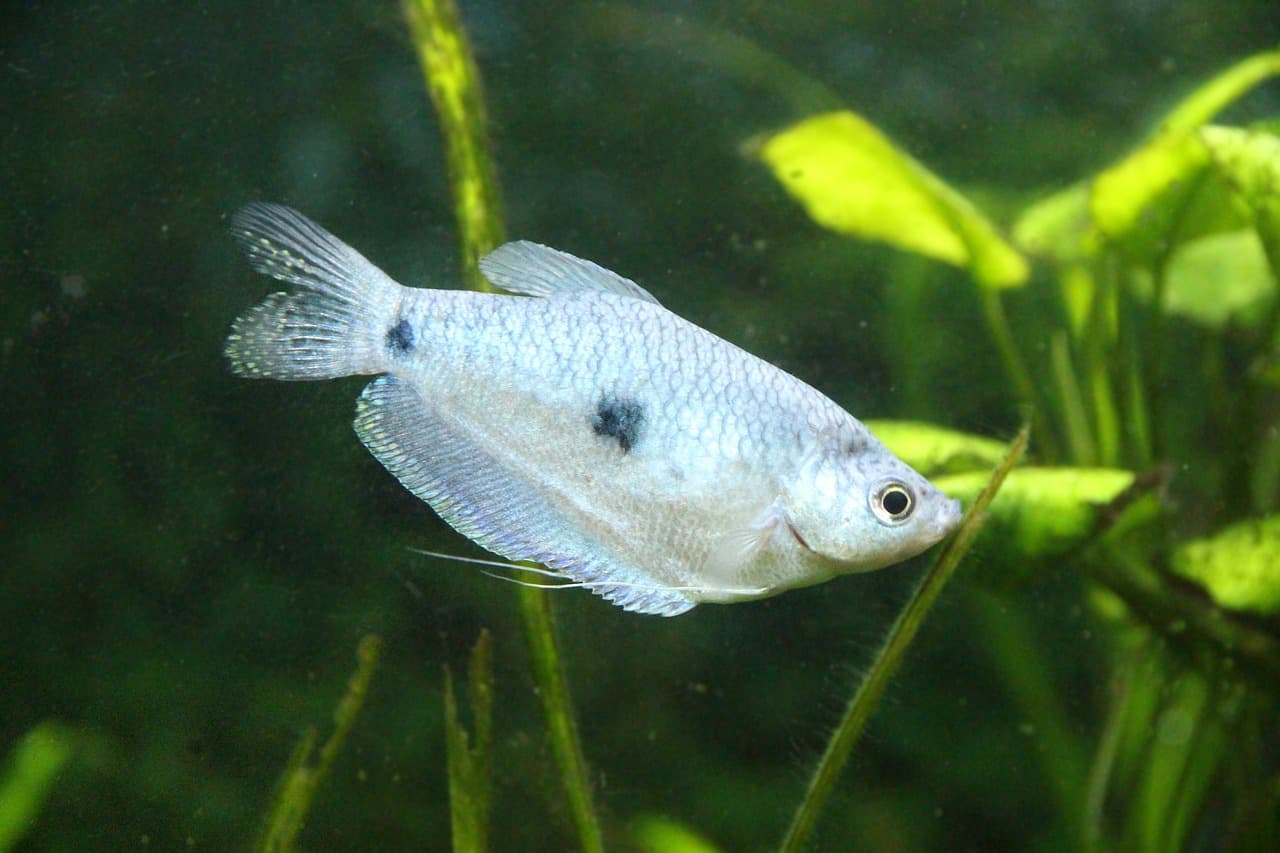The perfect way to describe gourami is definitely fins all day, many gourami species look absolutely stunning. It is not just the fin but also the coloration, and that is why some species are very popular as aquarium fish. There are 5 gourami species in Cambodia, and some are common food just like in many other Southeast Asian countries. Let’s take a look at the list below and see which gourami species you find the most beautiful.
Elephant Ear Gourami (ត្រីត្រចៀកដំរី)
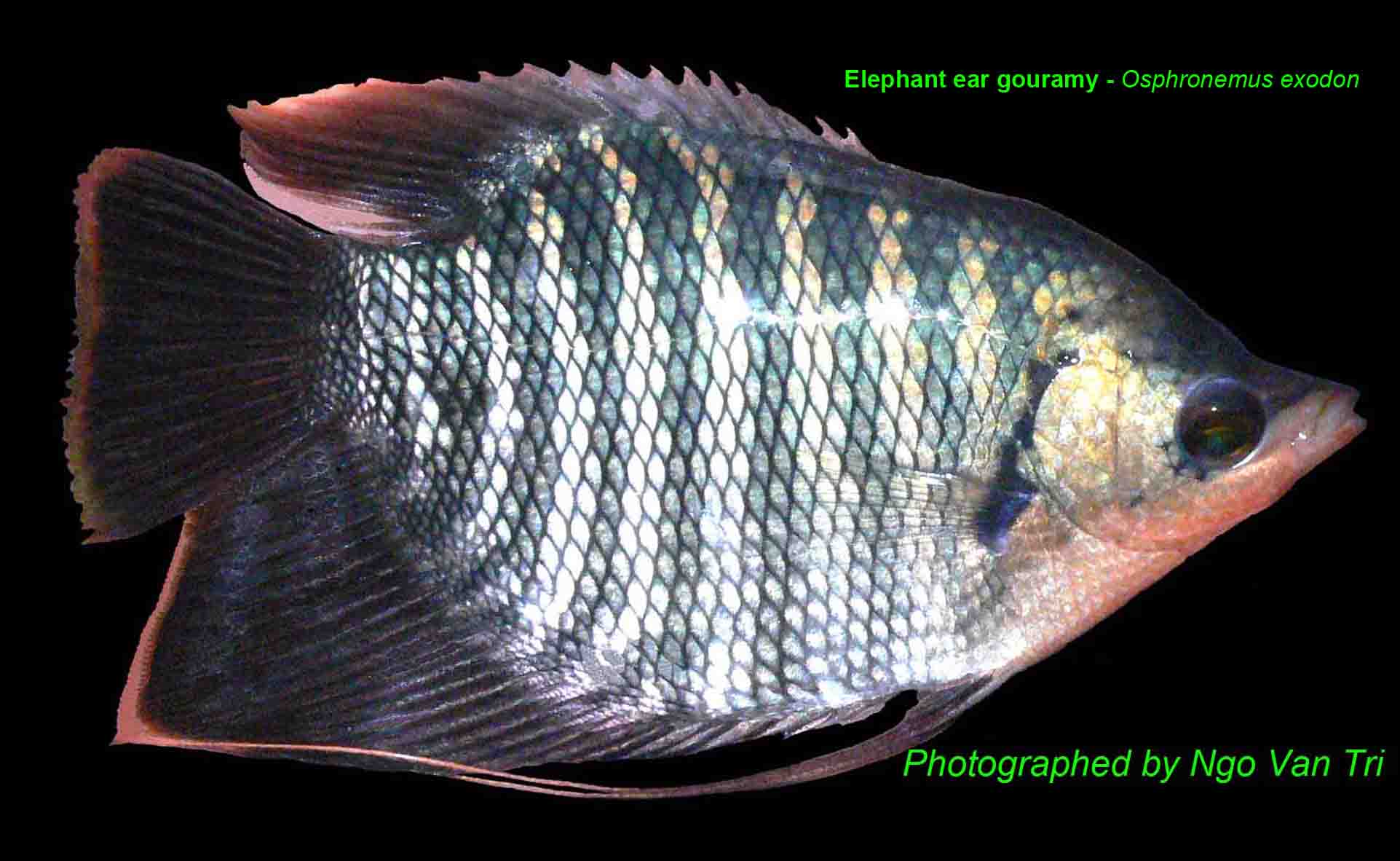
This is a very common gourami species, being notorious for its large size and unique appearance. An adult elephant ear gourami can reach up to 60 centimeters, and it has a red-orange stripe on its head. It also has a blackish body with pale fins while juveniles have 6 or 7 vertical strips on their bodies. Elephant ear gouramis are the residents of the Mekong River basin of Cambodia, Laos, and Thailand. Usually, they inhabit slow-moving or still waters in large rivers, feeding on insects and plant matter. In the dry season, they live in permanent bodies of water and they are found in flooded forests and floodplains in the rainy season. The elephant ear gouramis are listed as Vulnerable on the IUCN Red List due to habitat loss.
Giant Gourami (ត្រីរមាស)
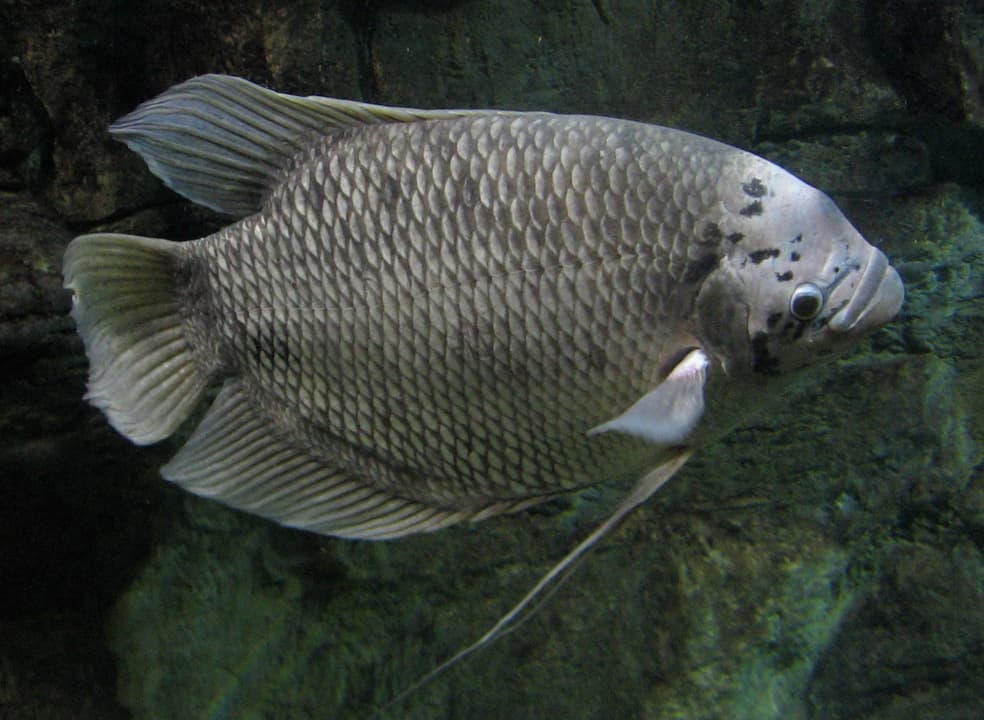
Here you are looking at a gourami species that is an important commercial fish in Cambodia and other nearby countries. An average giant gourami can grow to around 45 centimeters but up to 70 centimeters individual are also common. A giant gourami is usually brownish to olive-green in color, with a mottled pattern. It has a unique appearance of a hump above its eyes, and they look like and are a bully. If you put a gourami in a community tank, it will charge or snap at any smaller fish. It is very common for them to kill their smaller tank mates, pretty dangerous. As food, giant gouramis are very popular because they have thick flesh that is rich is minerals and proteins.
This gourami species is native to freshwater habitats in Southeast Asia, living in lakes, marshes, rivers, streams, and swamps. With an omnivorous diet, their menu consists of aquatic plants, crustaceans, insects and their larvae, and smaller fish. There are actually so many interesting things about the giant gourami, and here are a few of those. Giant gouramis are quite helpful for weed control because they feed on invasive aquatic plants like Kariba weed and more. On top of that, these fish are also capable of breathing moist air; meaning they can survive long periods out of water. Since they are highly adaptable and can thrive in a range of aquatic environments, no doubt that they are also popular in aquaria.
Moonlight Gourami (ត្រីកំភ្លាញភ្លុក)
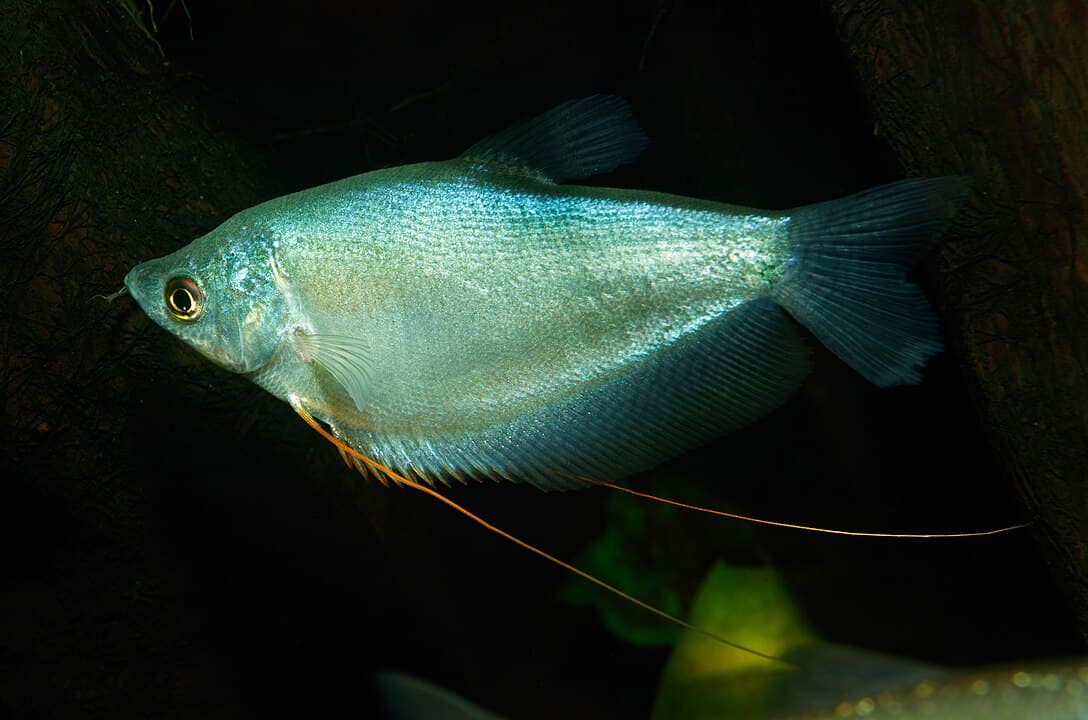
The name of this gourami species already tells you about the soothing appearance of this fish. A moonlight gourami has a silver body with a slightly greenish hue like a soft glow. Looks are not the only things that this fish has, a special ability to breathe air directly is extremely impressive. This is also a reason why it is not usual to see moonlight gouramis coming to the surface to gulp air. Moonlight gouramis are native to Cambodia, Thailand, and Vietnam, living in slow-moving or still waters with plenty of vegetation. Their common habitats are bigs, lakes, ponds, and swamps as well as floodplains of the Mekong River. They are not popular as food because they are quite small but their appearance makes them perfect for tanks.
Three Spot Gourami (ត្រីកំភ្លាញស្រែ)
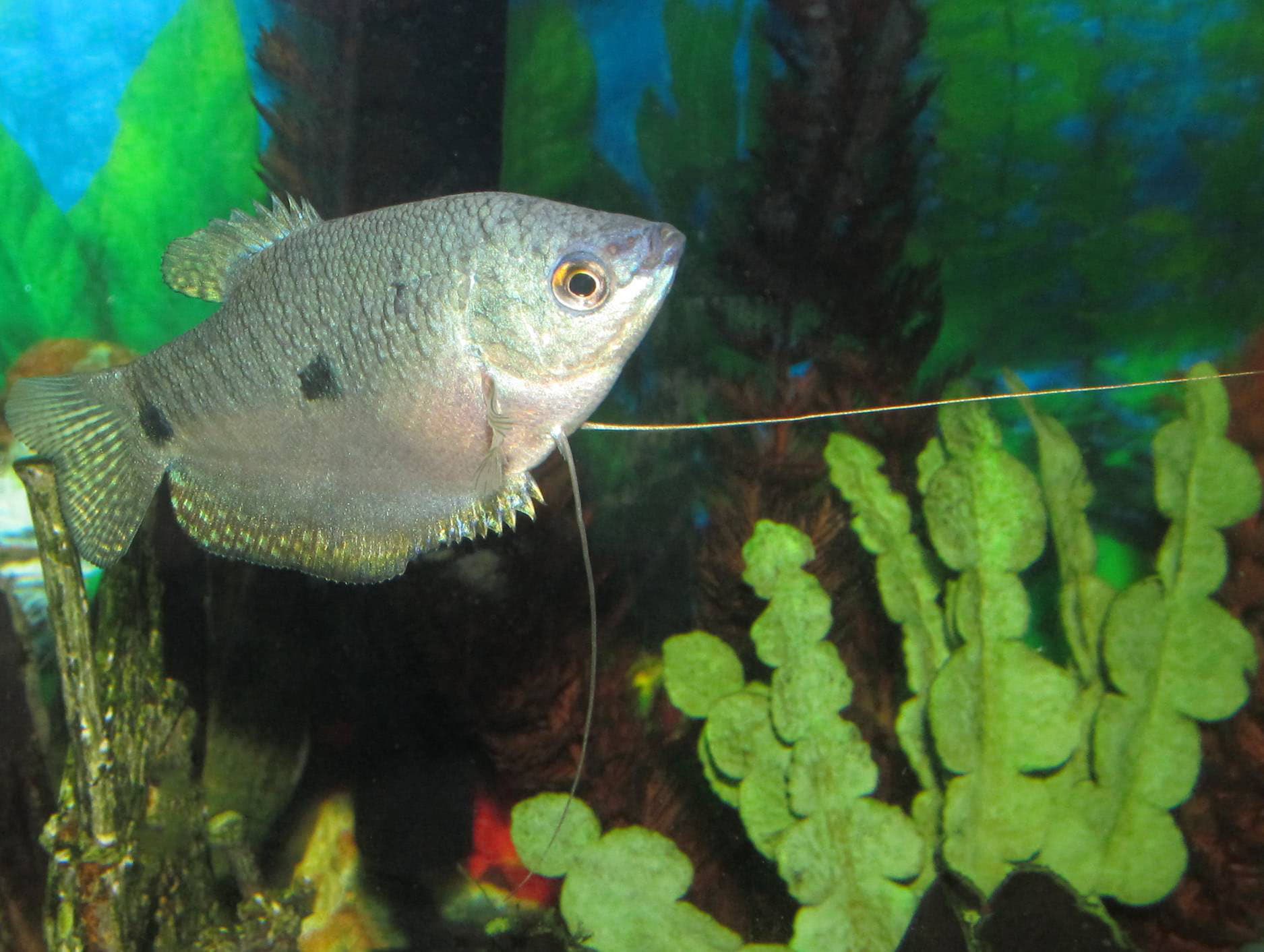
Why is it called three spots when all you see here is just two? That is because the two spots on each side align with the eye, making the eye the third spot. A three spot gourami grows to about 15 centimeters with a pale blue, gray, or pale brown color. Just like other gourami species out there, this one is also native to Southeast Asia and Southeastern Asia. They live in slow-moving and standing freshwater habitats feeding on aquatic plants and insects. One of the things to know about them is that male gouramis are quite aggressive despite their nice appearance. Probably jealousy, they often show aggression towards species with brightly-colored and long flowing fins by nipping their fins.
Snakeskin Gourami (ត្រីកន្ធរ)
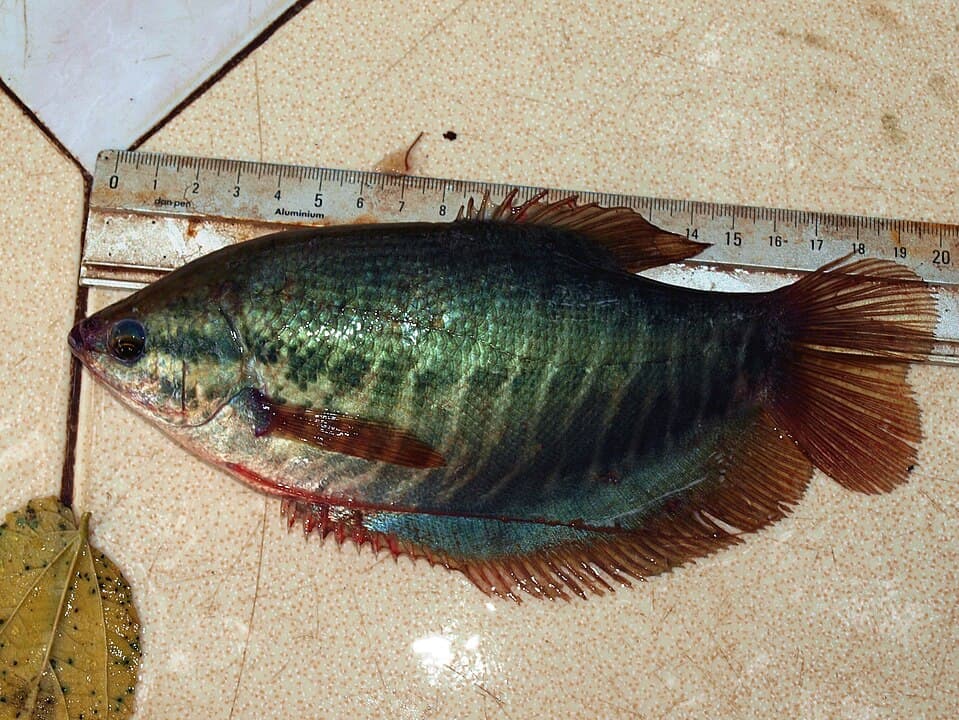
On average, snakeskin gouramis reach around 15 centimeters but some can grow up to 25 centimeters. A snakeskin gourami has an olive back and greenish-gray flanks with an irregular black band and stripes. As you probably already can tell, snakeskin gouramis have a coloration that resembles a snake skin; hence the name. The snakeskin gouramis are native to Southeast Asia, living in rice paddies, shallow ponds, and swamps, especially shallow, sluggish, or standing water habitats. Their diet includes insects, plant matter, and zooplankton. They are very popular as food due to the delicious and sweet taste of their flesh. These gouramis are commonly cooked by frying and grilling as well as in stew or soup like tom yam.
Related Post: Tonguesole Species In Cambodia
